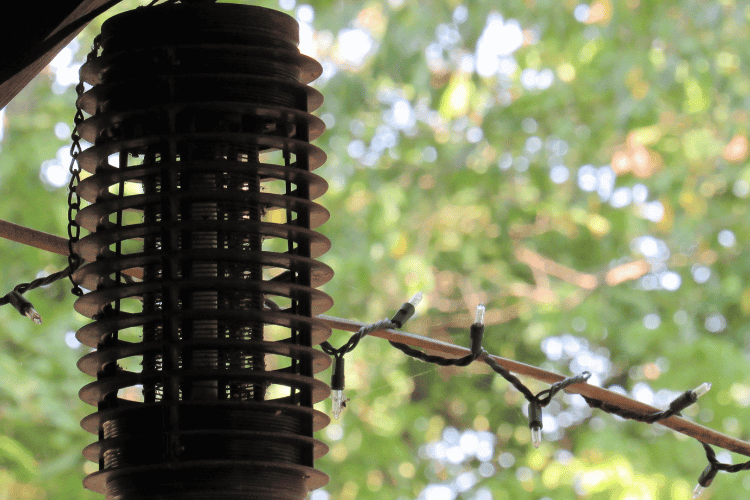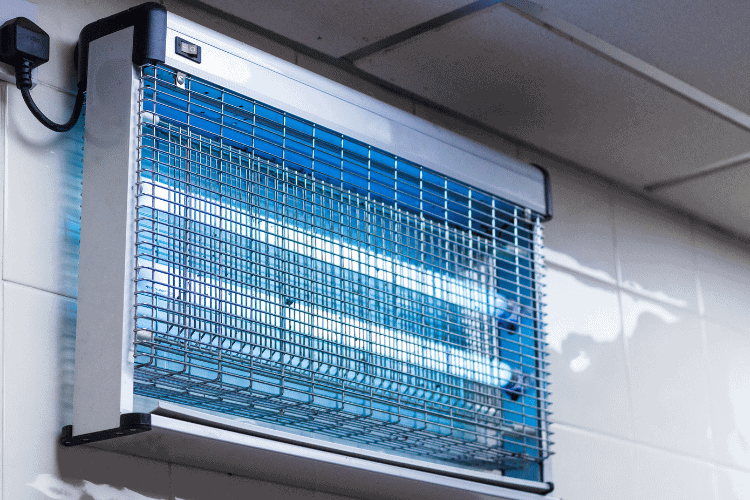A common question among many beekeepers is: Do bug zappers kill bees? You can breathe a sigh of relief; bug zappers won’t kill your bees.
Why? That’s what you’ll learn in this post. Let’s delve into how insect zappers operate and why they don’t pose a threat to your bees’ lives.
Why Won’t Bug Zappers Kill Bees?

Understanding the habits of bees sheds light on why bug zappers won’t jeopardize the safety of your precious pollinators.
Insect zappers are designed to target specific types of bugs active at night, such as mosquitoes and biting flies.
However, most bee species follow a natural rhythm, including honey bees and bumblebees. In other words, they’re active during the daytime, searching for food sources, but inactive at night. So, they don’t fly after sunset.
Bug zappers, with their enticing lights, may catch the attention of bees. Still, the crucial point is that these devices typically operate at night when bees are grounded and inactive.
That way, despite the potential attraction, the chances of direct interaction between bees and pest control devices during the night are minimal, if not impossible.
Check out these best books on bees for more information about these insects’ behavior.
Why May Bug Zappers Attract Bees?
There are two types of phototaxis responses in insects: positive and negative.
Like many other insects, honey bees exhibit a positive phototaxis response, instinctively moving toward light sources.
This could be a life-threatening trait if bees were active at night while your bug zapper is on. Nevertheless, as we mentioned above, bees are typically inactive at night.
After sunset, bees retreat to their colonies. This ensures their positive phototaxis response doesn’t threaten them during insect zapper activity.
How Bugs Zappers Operate?
Want to understand more about bug zappers and why they’re safe for your bees? This section will provide you with the straightforward working mechanism of these devices.
Let’s break down the essential components of these pest control devices:
Housing
The housing is the bug zapper’s exterior that serves a crucial protective role. It’s typically lantern-shaped and constructed from plastic and metal, ensuring safety during operation.
Light Bulbs
Insect zappers come with specialized light bulbs, often ultraviolet or mercury bulbs, to attract insects. The UV light appeals to insects, encouraging them to move toward the zapper.
Wire Electric Grid

They’re positioned around the light bulb. These screens are electrified by a transformer, creating an electrified barrier.
There’s a strategically placed gap in the wire screens, inviting insects to attempt to reach the enticing artificial light source.
Transformer
The transformer provides the necessary jolt to kill the targeted insects. Powered by electricity, it sends a formidable 2,000 volts coursing through the wire mesh screens.
This electrified grid ensures that any insect attempting to reach the light bulb meets an electrifying end.
In a nutshell, the alluring ultraviolet light draws insects to the bug zapper. As a result, they navigate through the gaps in the wire screens.
Ultimately, these insects meet their demise as they come into contact with the electrified mesh.
The Bottom Line
Do bug zappers kill bees? No, they won’t kill your bees. The primary reason is that most bee species aren’t active at night when insect zappers are typically on.
So, you can use these pest control devices without worrying about the safety of these beneficial insects.
- Does Bleach Kill Bees? - April 23, 2024
- How Do I Get Rid of Ants Without Harming Bees? - April 16, 2024
- Do Bug Zappers Kill Bees? Completely Explained - April 9, 2024
